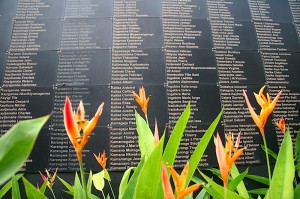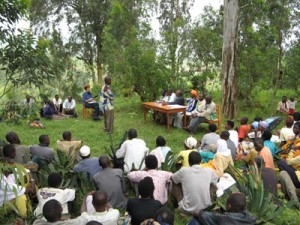This year will be marked by the commemorations of the Rwandan genocide of 1994. Twenty years later, it is still time to mourn the dead but also to draw lessons from the tragedy.
 The first lesson to learn from the Rwandan genocide is taught by historians: their work disclosed that the political logic behind ethnic hatred not only led to dehumanizing the Tutsi minority but preceded the genocide of that minority. Hatred for otherness, exacerbation of difference until there is no longer room for living together have powerfully contributed, in both Rwanda and Nazi Germany, to making possible, if not unavoidable, mass murder. We must not stop contradicting the theories which tend to make ordinary the crime, or even to justify it, by seeing it as a spontaneous event following the murder of President Habyarimana. We do know today that the Rwandan genocide was not an accident of History but the product of a racist ideology and a murderous will.
The first lesson to learn from the Rwandan genocide is taught by historians: their work disclosed that the political logic behind ethnic hatred not only led to dehumanizing the Tutsi minority but preceded the genocide of that minority. Hatred for otherness, exacerbation of difference until there is no longer room for living together have powerfully contributed, in both Rwanda and Nazi Germany, to making possible, if not unavoidable, mass murder. We must not stop contradicting the theories which tend to make ordinary the crime, or even to justify it, by seeing it as a spontaneous event following the murder of President Habyarimana. We do know today that the Rwandan genocide was not an accident of History but the product of a racist ideology and a murderous will.
The second lesson is addressed to the international community whose indifference and inaction appear today not only as a political mistake but also as a moral fault. That blameworthy attitude shows the civilizational complex of superiority of an international community still recovering from the Somalian fiasco of 1992 at that time. By allowing and reinforcing the sense of impunity nurtured by the opposing forces present in Rwanda, the abstention of foreign powers has also participated to the escalation of violence and the onset of the most horrible atrocities. This lesson resonates today with a singular echo in a context of mass murders perpetrated every day in Syria and the drama which is taking place in Central African Republic. This is the reason why the Rwandan genocide should raise awareness not only among those who tell the story, but also the people who hold in their hands the fate of entire regions. International justice alone, if it is to be relevant, will never replace the action of diplomacy, and sometimes the use of force to prevent the worst from happening.
Finally, the third lesson is that revisionism, with all its symbolic brutality, always prevent memories from finding root in people’s minds, survivors from mourning and honoring with dignity the victims. Revisionism banish the prospect of reconciliation between communities who once tore each other apart. The accounts of the Tutsi survivors and their executioners, like those of Holocaust survivors seventy years ago, unveil the unspeakable suffering of people who prepared themselves to die and who had to learn to live again. With the images, the nightmares haunting their nights and the memory of missing loved ones tearing their hearts apart. Commemoration is not only a matter of honoring the dead, it helps the living rebuild their lives.
Elie Wiesel wrote that he who chose to dedicate the rest of his life to tell the story of the Holocaust because he thought he was indebted to the dead. Not remembering them, he said, amounts to betraying them one more time. This is why we should, twenty years later, learn all the lessons from the Rwandan genocide.
Translated by Ndeye Mane Sall

 Genocide is not a crime as any other. While the other forms of conflicts meet political and economic interests, genocide is a concerted plan in view of eliminating the members of a given group. Genocide aims to “purify” the social group by removing the elements regarded as unworthy to be part of it: Jews in Germany, Blacks in South Africa
Genocide is not a crime as any other. While the other forms of conflicts meet political and economic interests, genocide is a concerted plan in view of eliminating the members of a given group. Genocide aims to “purify” the social group by removing the elements regarded as unworthy to be part of it: Jews in Germany, Blacks in South Africa